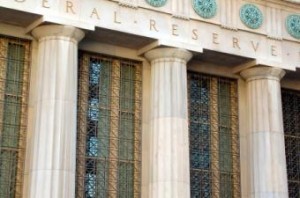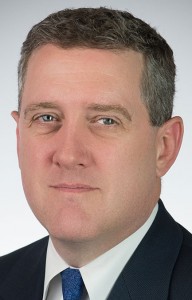 When it comes to the normalization of monetary policy on the part of the Federal Reserve, it comes down to two possibilities: either slow normalization or no normalization, according to St. Louis Fed President James Bullard in Santa Barbara, California, this week.
When it comes to the normalization of monetary policy on the part of the Federal Reserve, it comes down to two possibilities: either slow normalization or no normalization, according to St. Louis Fed President James Bullard in Santa Barbara, California, this week.
While speculation persists about another rate hike by the Fed in June, which would be the first time the Fed has raised the federal funds target rate since the historic liftoff in June, Bullard discussed two possibilities for monetary policy normalization: the Federal Open Market Committee (FOMC)’s scenario (slow normalization) and the market-based scenario (little or no normalization).
“The FOMC has laid out, via the Summary of Economic Projections, a data-dependent ‘slow normalization,’ whereby the nominal policy rate would gradually rise over the next several years provided the economy evolves as expected,” he said. “Market-based forecasts of FOMC policy, in contrast, envision ‘almost no normalization,’ whereby the policy rate would be changed only a few times in the next several years.”

James Bullard, St. Louis Fed President
Bullard said the three factors that favor the FOMC’s scenario are relatively strong labor markets in the U.S., an inflation rate that is closer to the FOMC’s target of 2 percent, and waning headwinds in global economic markets. According to Bullard, U.S. labor markets are “relatively tight,” although job gains for April, announced the day after Bullard spoke in Santa Barbara, were somewhat disappointing (160,000) compared with February and March. Bullard pointed out that the Fed’s labor market conditions index is well above historical averages. With the inflation factor, Bullard said that large movements in oil prices have had a substantial impact on headline inflation, and these measures have been trending higher as of late. On the waning global economic headwinds, Bullard said international influences on the U.S. economy appear to be waning in the first half of 2016 and that recent readings indicate a decline in financial stress; also, the effects of a stronger U.S. dollar appear to be waning.
For the market-based scenario, Bullard pointed out two factors: slow GDP growth and low inflation expectations. GDP grew at an annual rate of just 0.5 percent in the Bureau of Economic Analysis (BEA)’s first Q1 estimate, which may be partially attributable to seasonality. Bullard said that market-based measures of inflation expectation began a downward trend late in 2015 after enjoying a relatively satisfactory summer in 2014.
Which scenario is closer to being correct? Is it the FOMC’s projection of a gradual pace of rate increases over the next several years, or the market-based scenario that expects to see only a few increases in the federal funds target rate over that period?
“Evidence from labor markets, inflation readings and global influences suggests the FOMC median projection may be more nearly correct,” he said. “Evidence from readings on GDP growth and market-based inflation expectations suggests the market view of the path of the policy rate may be more nearly correct.”

 DSNews The homepage of the servicing industry
DSNews The homepage of the servicing industry










